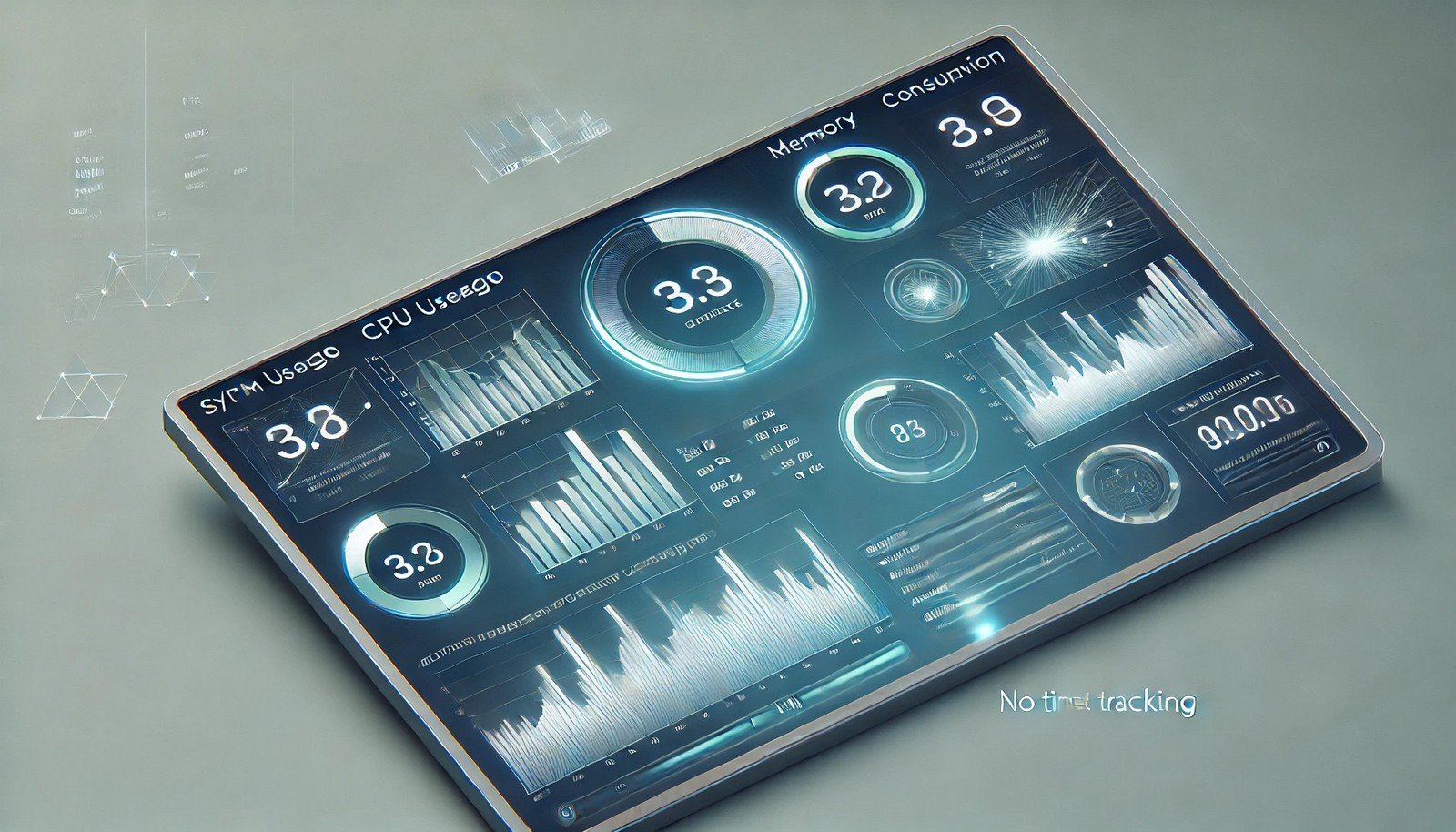System Performance Monitoring
 (Representational Image | Source: Dall-E)
(Representational Image | Source: Dall-E)
Quick Navigation:
- System Performance Monitoring Definition
- System Performance Monitoring Explained Easy
- System Performance Monitoring Origin
- System Performance Monitoring Etymology
- System Performance Monitoring Usage Trends
- System Performance Monitoring Usage
- System Performance Monitoring Examples in Context
- System Performance Monitoring FAQ
- System Performance Monitoring Related Words
System Performance Monitoring Definition
System Performance Monitoring refers to the continuous tracking and analysis of a computer’s hardware and software performance to ensure optimal efficiency, stability, and responsiveness. This process involves measuring key metrics such as CPU usage, memory consumption, disk activity, and network traffic. Tools like Task Manager, Performance Monitor, and third-party solutions help diagnose bottlenecks, detect failures, and optimize system operations.
System Performance Monitoring Explained Easy
Imagine you have a toy car that moves fast, but sometimes it slows down or stops. You want to know why. Is the battery low? Are the wheels stuck? Just like checking the toy car, System Performance Monitoring keeps an eye on a computer, checking if it’s running smoothly or if something is making it slow.
System Performance Monitoring Origin
The concept of monitoring system performance emerged in the early days of computing when large mainframe computers required manual observation to detect issues. As personal computers and complex networks became widespread, automated monitoring tools were developed to track system health in real time.
System Performance Monitoring Etymology
The term “System Performance Monitoring” is derived from "System" (a set of connected components), "Performance" (how well something functions), and "Monitoring" (observing and tracking activities). It emphasizes the observation of a system’s operational effectiveness.
System Performance Monitoring Usage Trends
With the rise of cloud computing, AI-driven analytics, and remote work, System Performance Monitoring has become essential for IT administrators and businesses. Modern trends include predictive analytics for proactive issue resolution, real-time monitoring dashboards, and automated anomaly detection to prevent downtime.
System Performance Monitoring Usage
- Formal/Technical Tagging:
- IT Operations
- Performance Analysis
- Network Management - Typical Collocations:
- "real-time system performance monitoring"
- "CPU and memory monitoring tools"
- "performance bottleneck detection"
- "monitoring system health metrics"
System Performance Monitoring Examples in Context
- A cloud service provider uses System Performance Monitoring to track server health and prevent outages.
- Gamers use monitoring tools to check CPU temperature and prevent overheating during intense gaming sessions.
- IT teams rely on real-time system performance monitoring to optimize software applications and reduce lag.
System Performance Monitoring FAQ
- What is System Performance Monitoring?
It’s the process of tracking a computer system’s performance, detecting issues, and ensuring efficiency. - Why is System Performance Monitoring important?
It helps identify and fix performance bottlenecks, prevents crashes, and improves overall system health. - What are the key metrics in System Performance Monitoring?
Common metrics include CPU usage, memory consumption, disk activity, and network performance. - How does System Performance Monitoring help businesses?
Businesses use it to maintain high-performing IT infrastructure, ensuring productivity and uptime. - What tools are used for System Performance Monitoring?
Tools like Windows Performance Monitor, Task Manager, Nagios, and SolarWinds are commonly used. - Can System Performance Monitoring prevent system failures?
Yes, real-time monitoring and alerts can help detect problems early, preventing potential failures. - Is System Performance Monitoring necessary for personal computers?
Yes, it helps users optimize their systems, detect overheating, and manage software performance. - How does AI improve System Performance Monitoring?
AI-driven analytics can predict failures, detect anomalies, and provide automated solutions. - Can System Performance Monitoring improve gaming performance?
Yes, it helps gamers track system resource usage and optimize settings for better performance. - What are some best practices for System Performance Monitoring?
Regularly check system logs, use monitoring tools, set performance thresholds, and update software.
System Performance Monitoring Related Words
- Categories/Topics:
- IT Infrastructure
- Computer Maintenance
- Resource Optimization
Did you know?
In large data centers, AI-driven System Performance Monitoring can predict hardware failures weeks in advance. This predictive capability helps prevent system crashes and downtime, saving millions in potential losses.
PicDictionary.com is an online dictionary in pictures. If you have questions or suggestions, please reach out to us on WhatsApp or Twitter.Authors | Arjun Vishnu | @ArjunAndVishnu

I am Vishnu. I like AI, Linux, Single Board Computers, and Cloud Computing. I create the web & video content, and I also write for popular websites.
My younger brother, Arjun handles image & video editing. Together, we run a YouTube Channel that's focused on reviewing gadgets and explaining technology.



Comments powered by CComment